Strategy Byte - Week 6 : Competitive Advantage to Value

Table of Contents
- Recap
- Key Questions
- Unique Capability
- Value
Recap
Last week we introduced the term Competitive Advantage which means in simple terms :
- There is a proprietary solution to solve a pain point or serve customers better.
- This proprietary solution is unique & different from that offered by peers / competitors
- The proprietary solution
- Generates greater value to customers than competitors or
- Allows the company to serve customers at lower cost
This proprietary solution can be a superior brand, proprietary technology, superior data on customers or superior process / systems.
We then introduced the three methods by which competitive advantage can be realized (by Michael E. Porter)
- Differentiation
- Cost
- Focus
Let us explore competitive advantage with some examples & then see how it generates value.
Key Questions
When a competitive advantage is identified, the following questions need to be answered :
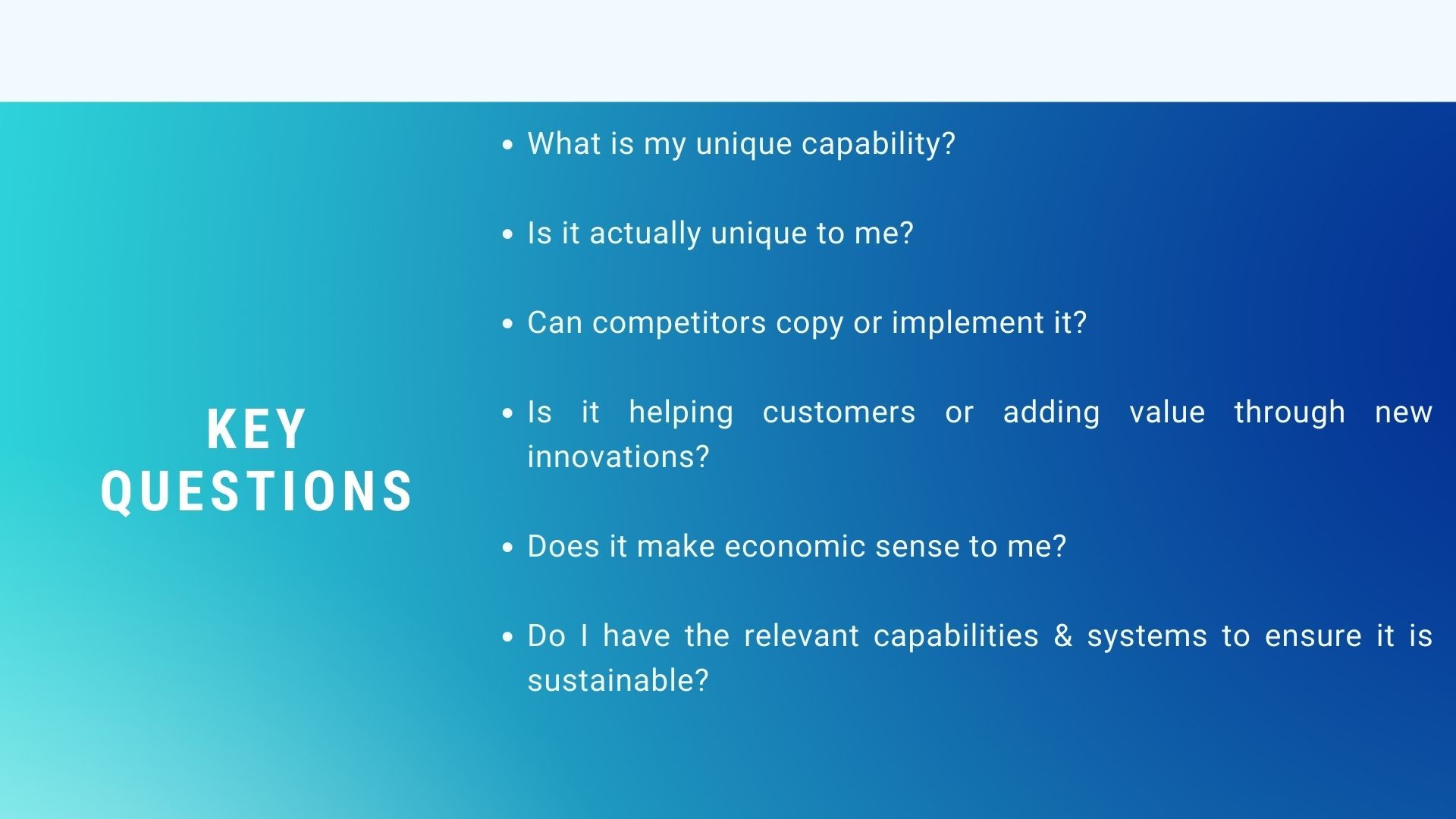
Unique Capability
How is a competitive advantage unique? It should be unique in a way that competitors cannot or will not implement something similar. How is this possible? Some of the most ways this can be done are :
A. Patent or license the product / service or technology
The technology or process to produce a product or service is patented so that it is illegal for other companies to provide similar products or services. E.g., Only Microsoft can license Office 365 products to customers & is a unique product from Microsoft . Though there are other spreadsheet & word softwares, they are not as ubiquitous or revenue generating as MS Office.

B. A Strong Brand
What is a Brand? A brand is
- a promise made by the company
- to it's customers
- on their experience when using the company's product
(Source : Roger L Martin).
Companies with strong brands deliver on their promise consistently & have the relevant systems & processes in place to ensure customers are highly satisfied with their products / services on an ongoing basis. This also ensures that customers keep going back to the company for repeat purchases.
For e.g., Apple customers know if they buy an apple product, it will be elegant, works out of the box & integrates easily with other apple products.

Superior Data
Tech companies like Facebook, Google etc can generate a virtual persona of every customer using data collected from them when using their services. The amount of data they have on each of us is mind-boggling. They use this data in their business models to generate revenue. It is virtually impossible for other companies to get he level of data collected at Facebook or Google.

Superior Process / Systems
A good example of superior processes or systems is Apple's unique type of chips called M2 chips. These chips provide superior performance & battery life compared to peers & are made using proprietary processes at Apple. This combined with it's famous product design which cannot be copied by competitors creates a very strong brand for customers who prefer elegance & integration with other Apple products which makes their lives easier.
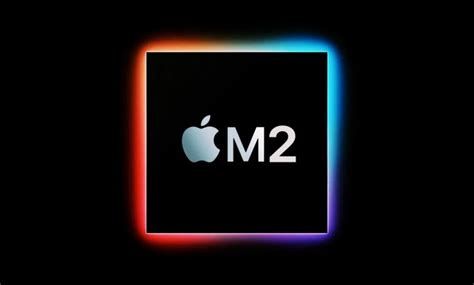
Competitive Advantage results in increase in value. How?
Value
Before we move forward, let us understand :
- How does competitive advantage result in value &
- How does a company know it's competitive advantage is working & generating value ?
There are two ways by which competitive advantage can generate value :
- Competitive advantage results in customers' willingness to pay for the company's product / service over & above that of it's competitors. This reflects the customer's satisfaction with the company's product / service & increases the perceived value of the product / service over that of it's competitors resulting in higher margins. (Differentiation)
- Competitive advantage also can result in cost efficiencies compared to competitors. This results in higher margins compared to competitors. (Cost Leader)
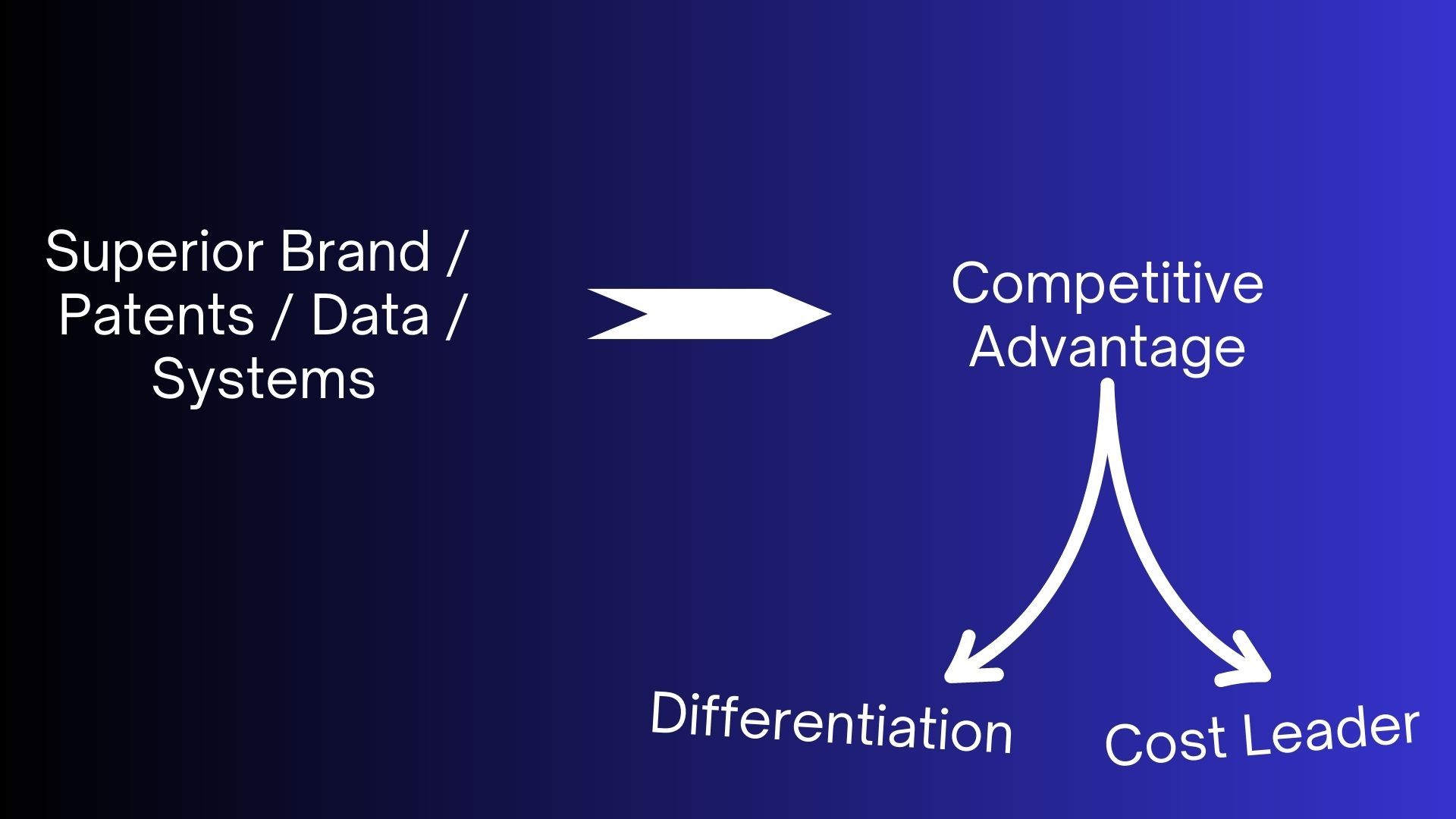
If the margins can be maintained sustainably, it results in consistent & higher profits than that of the competitors & peers over a period of time, It proves that the company's strategy is superior compared to that of it's peers & competitors.
Representing the above diagrammatically, we can see that the formula for value is
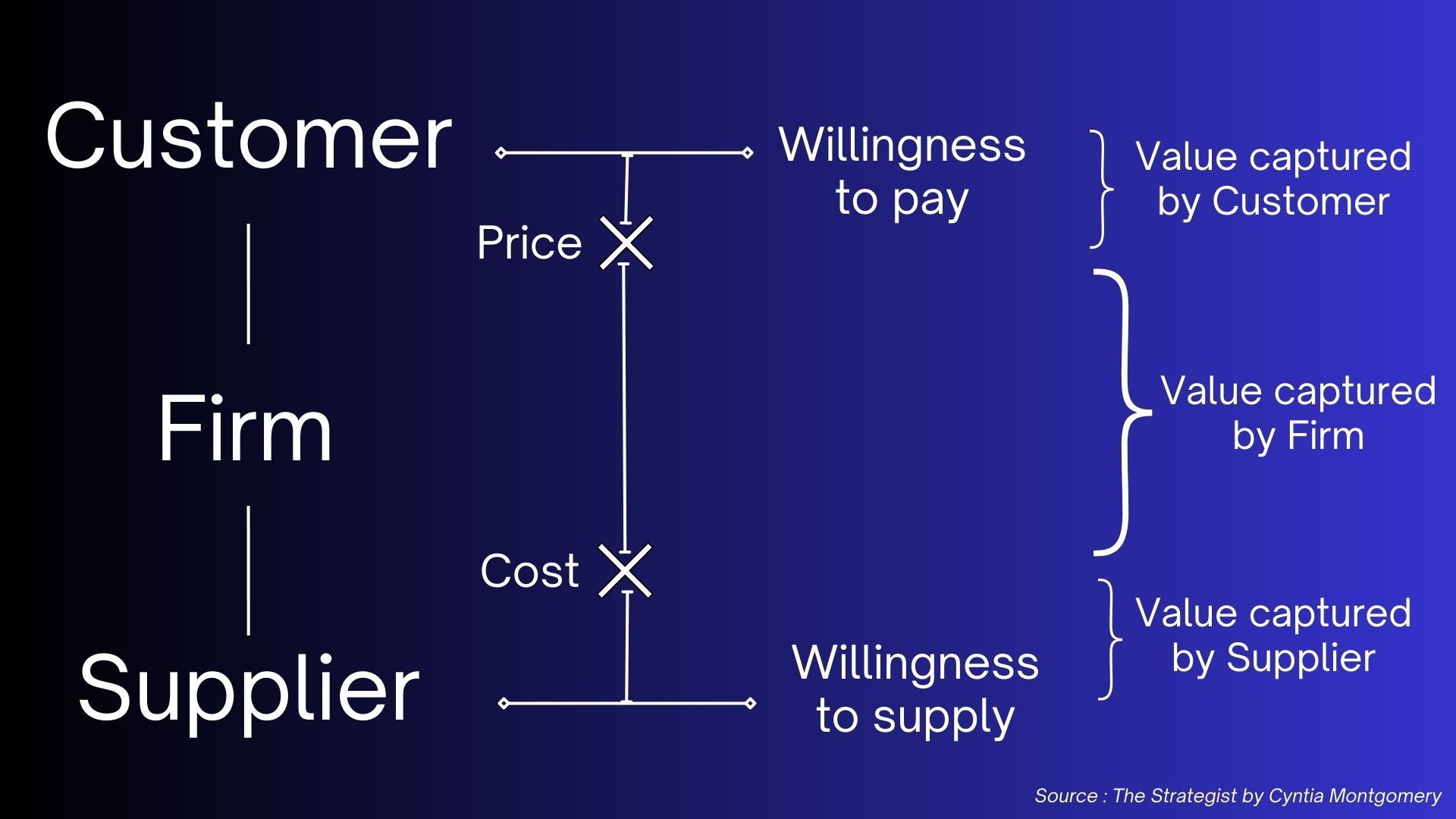
Higher the perceived value of the company's product or service, higher the income generated at a given level of costs. In other words,
Higher value is derived when a company increases this gap between the willingness of customers to pay & it's costs. Refer below diagram for a visual representation.
A competitive advantage resulting in vendors willing to supply products / services at lower costs is another way by which higher value can be achieved. For example, if the company can give the vendor an advantage through any process or product improvement, the vendor can transfer it's cost savings to it's customer (the company).
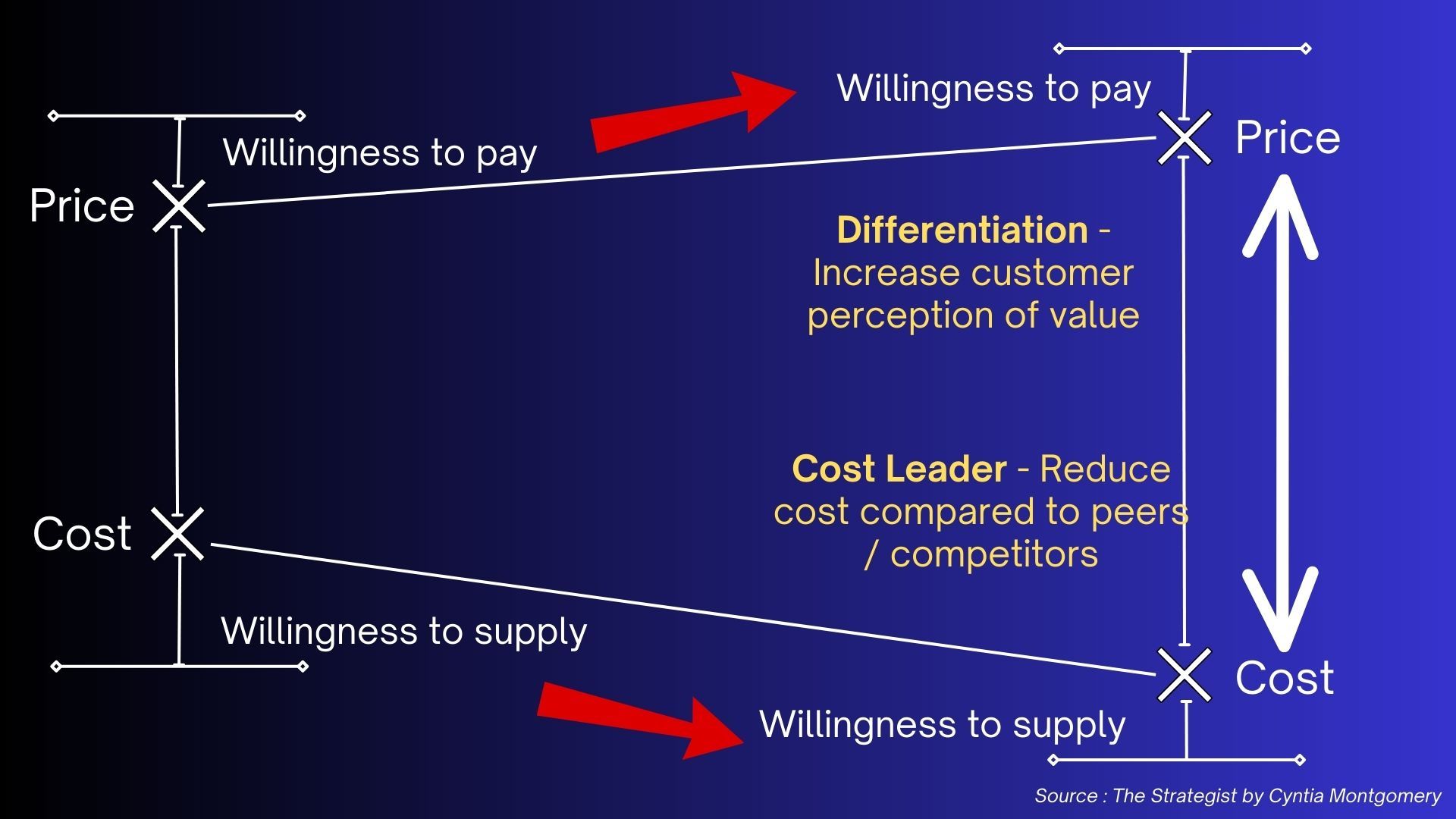
Now that we have a core purpose & identified a competitive advantage to fulfill that purpose. What next?
The company needs to survive & thrive in a VUCA (Volatile, Uncertain, Complex & Ambiguous) environment. So understanding it's external environment is key.
We will explore that from next week.